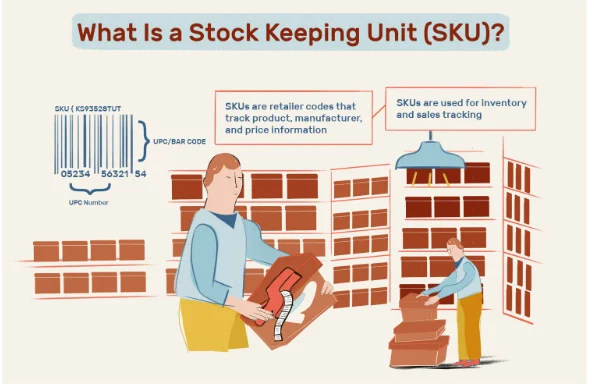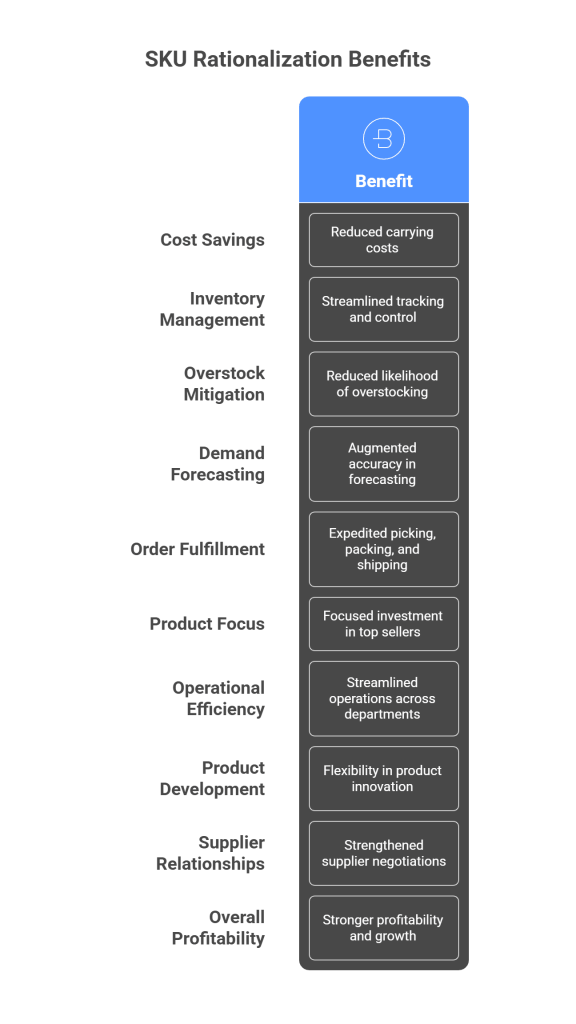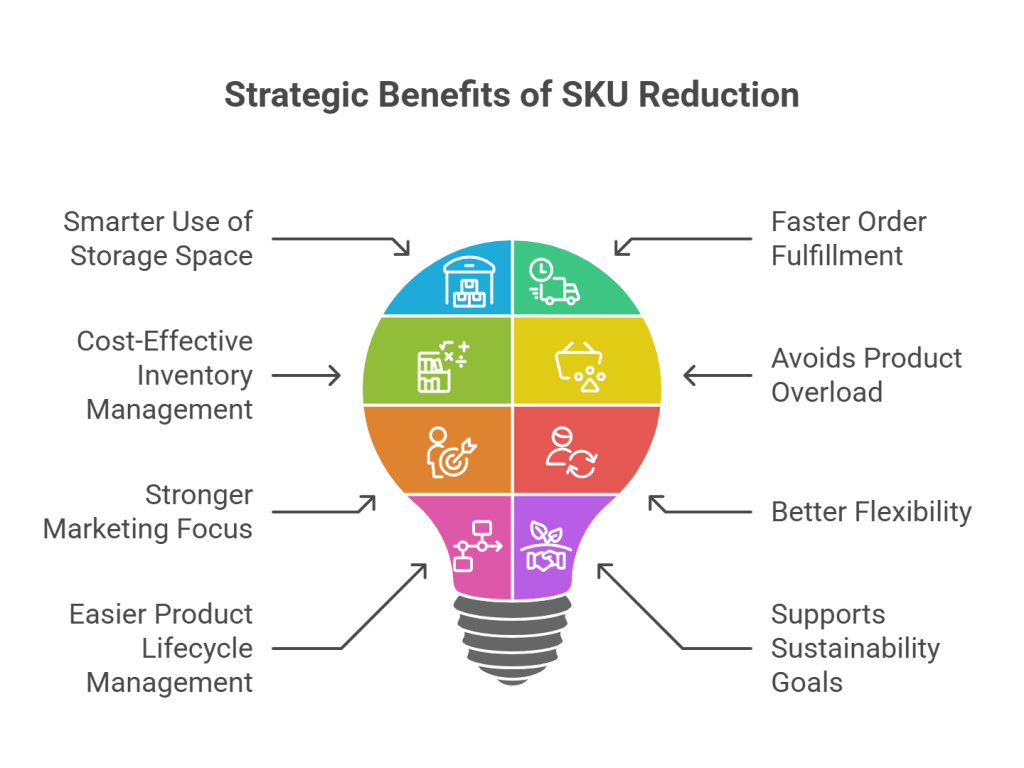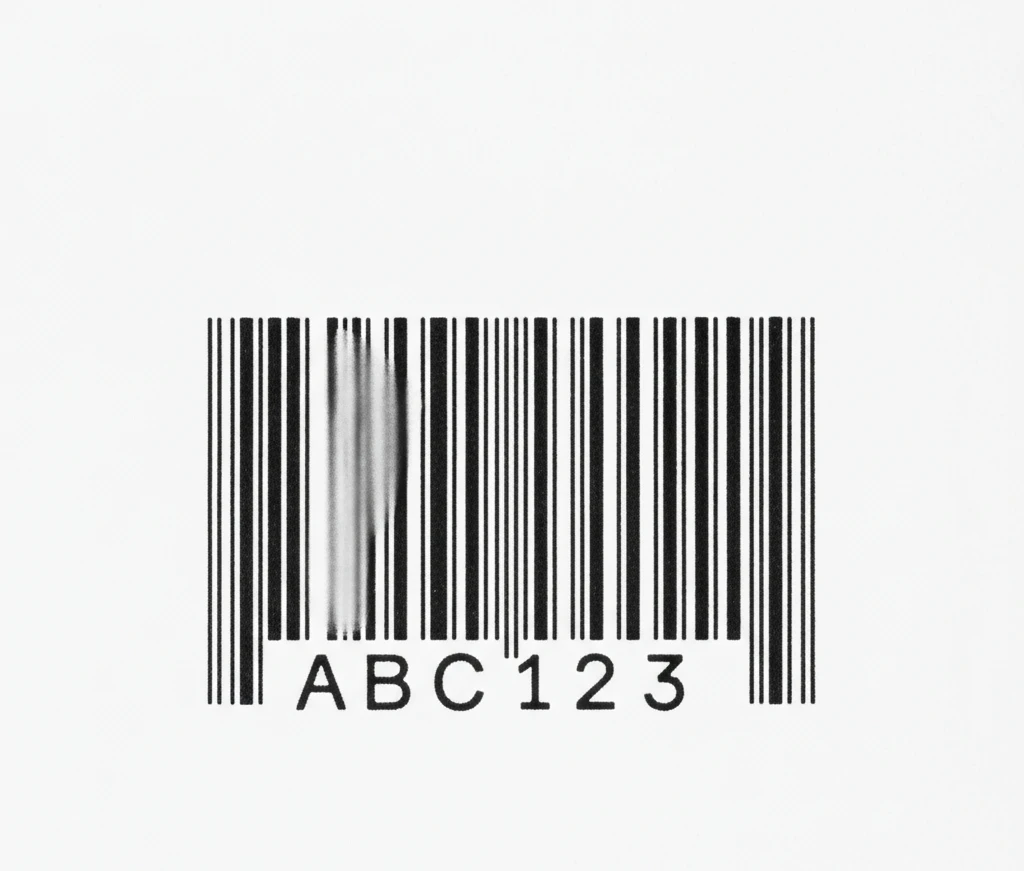
Demystifying SKU: A Deep Dive into Stock Keeping Units
In the intricate domain of inventory management, an acquaintance with SKU (Stock Keeping Unit) proves indispensable for businesses aspiring toward operational efficiency. Join us on a journey as we delve into the complexities of SKUs, providing a robust understanding.
What is SKU?
At its essence, a Stock Keeping Unit (SKU) functions as the linchpin of efficient inventory management, serving as a distinctive identifier for each product in your inventory. Far beyond a mere code, the SKU resembles a finely tuned fingerprint, discerning products through a fusion of alphanumeric characters encoding crucial details such as type, variant, size, and color. This systematic approach not only simplifies tracking and enhances precision in operations but also expedites decision-making, rendering it an indispensable tool for businesses. The SKU operates as a silent orchestrator in the intricate ballet of inventory, ensuring seamless operations and empowering data-driven insights, thereby revolutionizing the business landscape.
SKU Example:
To solidify our understanding, let’s explore real-world scenarios with SKU examples. Picture a fashion boutique where each dress variant, distinguished by size and color, is assigned a unique SKU. For instance, ‘WD001-Red-S’ could represent a red dress in small size. This meticulous categorization streamlines inventory tracking.
How to set SKU number?
Mastering the intricacies of setting SKU (Stock Keeping Unit) numbers proves pivotal for streamlined inventory management. This process entails the creation of a systematic structure wherein each SKU functions as a unique identifier, incorporating indispensable product attributes like type, variant, size, and color. This meticulous approach not only guarantees the singularity of each code but also simplifies tracking and swift identification. Effectively crafted SKU numbers form the bedrock for efficient inventory control, empowering businesses to navigate their product catalog with precision and ease.
SKU Rationalization Benefits: Smarter Inventory for a Stronger Business

SKU rationalization is more than just cutting down your product list—it’s a strategic move to simplify your inventory, cut unnecessary costs, and boost overall business performance. Here’s how refining your SKU portfolio can bring meaningful benefits to your operations:
1. Economies Through Cost Savings
By identifying and eliminating redundant or underperforming SKUs, you reduce carrying costs like storage, insurance, and obsolescence. This leaner approach helps your business operate more efficiently and saves money in the long run.
2. Refinement of Inventory Management
With fewer SKUs to manage, inventory tracking and control become more streamlined. This clarity helps teams monitor stock levels more easily and reduce errors in stock handling or ordering.
3. Mitigation of Overstock Scenarios
A trimmed-down SKU list means you’re less likely to overstock low-demand items. It frees up valuable storage space and ensures your warehouse is used for fast-moving, profitable products.
4. Augmented Accuracy in Demand Forecasting
When your SKU catalog focuses on key-performing items, forecasting becomes much more precise. This helps you allocate resources and reorder stock based on actual demand trends rather than guesswork.
5. Expedited Order Fulfillment
Fewer SKUs lead to a cleaner, more navigable warehouse. That means faster picking, packing, and shipping—directly improving customer satisfaction with quicker deliveries.
6. Focused Embrace of High-Performing Products
Rationalization lets you double down on what’s working. You can invest more in top-selling products—whether through marketing, promotions, or bundling—maximizing ROI and customer value.
7. Operational Streamlining
Managing a simplified SKU list means less complexity across departments. From procurement to customer service, operations become easier, smoother, and less prone to costly mistakes.
8. Flexibility in Evolutionary Product Development
With fewer distractions from low-performing SKUs, your business can invest more in product innovation. You gain bandwidth to improve existing items or explore new ideas based on what customers really want.
9. Nurturing Supplier Relationships
Having a tighter SKU focus helps strengthen supplier negotiations. You can place more meaningful orders, secure better terms, and simplify logistics with more consistent inventory flow.
10. Holistic Impact on Profitability
Ultimately, SKU rationalization leads to stronger profitability. It aligns your product lineup with market demand, reduces waste, and creates room for growth—all while enhancing operational efficiency.
SKU Reduction Benefits: Why Less Can Be More in Inventory Management

Reducing the number of SKUs (Stock Keeping Units) isn’t just about clearing space—it’s a smart, strategic move that can transform how your business operates. By focusing on what really sells and cutting down on excess inventory, companies can unlock better efficiency, cost savings, and agility.
1. Smarter Use of Storage Space
By trimming down unnecessary SKUs, you free up valuable warehouse space. This means every square foot is used for items that actually move, helping reduce storage costs and clutter.
2. Faster and Simpler Order Fulfillment
With fewer products to sort through, warehouse staff can pick, pack, and ship orders much faster. This leads to improved speed, accuracy, and customer satisfaction.
3. Cost-Effective Inventory Management
Managing fewer SKUs means you save on labor, tech systems, and stock control efforts. It simplifies your operations, making it easier and cheaper to manage inventory.
4. Avoids Product Overload
Too many SKUs can overwhelm teams and customers alike. SKU reduction helps you focus on your core offerings—products that align with your brand and goals—rather than constantly adding new ones.
5. Stronger Marketing and Product Focus
With a more refined product range, your marketing becomes more focused. You can concentrate on promoting your best-sellers and high-margin items, improving campaign effectiveness and brand clarity.
6. Better Flexibility in a Changing Market
Fewer SKUs = faster decisions. It becomes easier to adapt to changing trends, customer needs, or supply chain challenges without the burden of slow-moving stock.
7. Easier Product Lifecycle Management
SKU reduction helps streamline the process of launching new products or phasing out old ones. With fewer items, it’s easier to monitor performance and make timely adjustments.
8. Supports Sustainability Goals
Maintaining a lean inventory reduces waste from overproduction, excess storage, and unsold goods. It’s a step towards more sustainable and environmentally friendly business practices.
The Detective’s Guide: How to Find SKU?

Searching for a specific Stock Keeping Unit (SKU) in a vast inventory can feel like solving a mystery—but with the right tools and tactics, you can crack the case in no time. Here’s your detective-style guide to uncovering SKUs quickly and efficiently.
1. Harnessing Inventory Management System Search Functionalities
Most modern inventory management systems come equipped with powerful search features. You can simply type in product names, categories, or descriptions to find the exact SKU you’re looking for—fast and hassle-free.
2. Unveiling SKU Mysteries Through Barcodes
Think of barcodes as your magnifying glass. Every product has a unique barcode that ties directly to its SKU. Scanning barcodes gives you instant access to item details, making SKU identification quick and accurate.
3. Systematic Categorization for Efficient Searching
Like organizing clues at a crime scene, grouping your products by type, brand, or category can make SKU searches much more straightforward. A well-structured inventory means faster problem-solving.
4. RFID Technology: The High-Tech Detective Toolkit
Using Radio-Frequency Identification (RFID) is like equipping your detective with the latest tech. These smart tags track products wirelessly and provide real-time SKU data, enhancing inventory accuracy and visibility.
5. Team Training for SKU Recognition
Your team is your squad of detectives. Training them to recognize and search SKUs efficiently empowers them to identify and locate items with speed and confidence—keeping your operations smooth.
6. On-the-Go SKU Retrieval with Mobile Apps
Mobile inventory apps give you SKU access in the palm of your hand. Whether on the warehouse floor or out in the field, these apps let you scan, search, and retrieve SKU data anytime, anywhere.
7. Structured SKU Naming Conventions
Like any great case file, your SKUs should follow a logical, consistent format. Setting up naming conventions—such as including product type, size, or color—makes SKUs easier to understand, remember, and locate.
Conclusion:
In conclusion, SKU mastery transcends technicality; it’s a strategic maneuver in the realm of inventory management. From crafting SKU numbers to reaping the rewards of rationalization and reduction, each step contributes to a finely tuned operational machinery.
Take charge, decode your SKUs, and witness the transformative impact on your business efficiency. The SKU journey surpasses numerical considerations; it’s about unlocking the potential for unparalleled success in the competitive marketplace.Empower your business with QodeNext by elevating SKU mastery for strategic operational efficiency and unparalleled success in the competitive marketplace.
Frequently Asked Questions (FAQs) About SKU
1. Why is SKU important for my business?
SKU is crucial for efficient inventory management. It provides a unique identifier for each product, simplifying tracking and ensuring organized operations.
2. How can I create effective SKU numbers?
Create a systematic structure by incorporating product attributes like type, size, and color. Ensure each SKU is unique to facilitate quick identification.
3. What are the benefits of SKU rationalization?
SKU rationalization optimizes your inventory by eliminating redundancies, reducing costs, and enhancing operational efficiency.
4. How does SKU reduction benefit my business?
Strategic SKU reduction declutters your inventory, saving storage space, and streamlining order fulfillment, contributing to overall operational efficiency.
5. Is finding a SKU a challenging task?
Not at all. Utilize your inventory management system’s search functionalities or employ barcodes for swift and efficient SKU identification.
6. What is the easiest way to find an SKU in a large inventory?
The easiest way is to use an inventory management system with a search bar. Simply type in the product name, category, or description, and the system will pull up the relevant SKU instantly.
7. Can I use my phone to look up SKUs on the go?
Absolutely! Mobile inventory apps allow you to scan barcodes or manually search SKUs directly from your smartphone or tablet. It’s like having a portable detective kit in your pocket.






